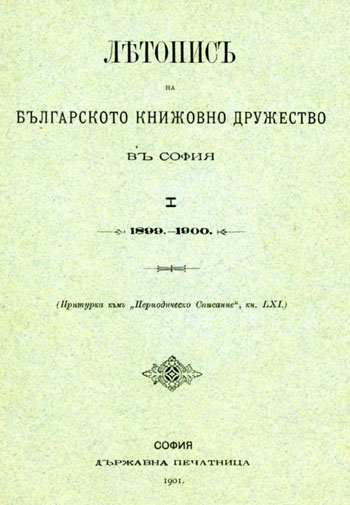
We kindly inform you that, as long as the subject affiliation of our 300.000+ articles is in progress, you might get unsufficient or no results on your third level or second level search. In this case, please broaden your search criteria.




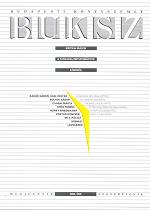
A critical review on Chrisitan Gerlach's and Götz Aly's "Das letzte Kapitel: Der Mord an den ungarischen Juden".
More...
Mjesto projekta „bosanskih piramida“ u kreiranju bošnjačkog nacionalnog narativa, ali i novog projekta konstrukcije bosanske nacije, već je prepoznato u strategijama Osmanagića i njegovih suradnika da uspostave piramide kao svojevrsno mjesto zajedničke bosanske memorije na kojemu se doživljava iskustvo pripadanja bosanskoj naciji. Ovo se dobro vidi na simboličkoj razini – inkorporaciji nove zastave BiH u logo Zaklade te snažnim diskurzivnim naglaskom na „bosanstvu“ visočkih piramida
More...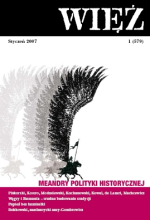

Map of the Carpathain region is a guide to the Hungarian history.
More...

A national Polish institution designed to coordinate activities in relation to the Sorbs was created in Poznań on 5 and 6 October 1946. The main focus was on the current development of the Sorbs and Lusatia after the war, together with the organisation of courses in Sorbian studies and research. All institutions involved in this question in Poland met in Cracow on 30 January 1947. A statute relating to this work was put together, which assigned individual tasks and elected Professor Tadeusz Stanisław Grabowski as chairman of the committee. The task of the scientific committee, as it was called, was to find a solution to the Sorbian or Lusation question. Several options were discussed in this respect: they ranged from remaining in Germany within an autonomous province, or the possibility of becoming part of Czechoslovakia or Poland, to the creation of an independent Sorbian state. Contacts existed on the one hand with the Domowina in Lusatia, and on the other hand with the Sorbian National Committee operating in Prague. In addition, the scientific committee composed a memorandum, which demanded the free development of the Sorbian nation. But already by November 1947 the organisation was forced to suspend its political activities in relation to the Sorbian question, as Poland did not want to get into a political conflict with the Soviet Union. The committee only remained active to a limited extent in academic matters.
More...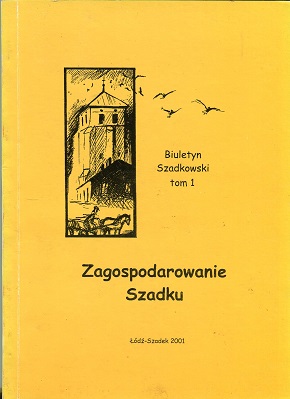
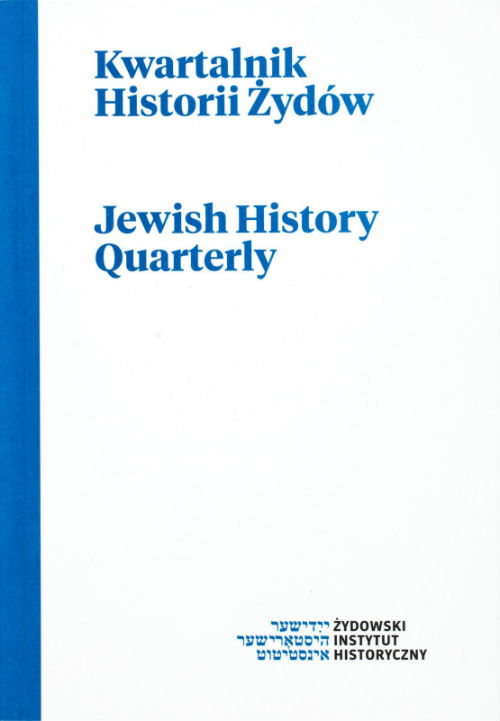
The Department of Statistics and Records (WEiS) was one of the biggest organizational units of the Central Committee of Jews in Poland (CKŻP) and also one of those that worked for the longest period of time. Its tasks focused on three areas: the keeping of records (registration of survivors), statistics, and search for missing persons (information). The registration of survivors among Polish Jews embraced over 200,000 persons, whose personal data were kept in the Central File in Warsaw and in the form of alphabetical lists compiled in the years 1945-1947 and released in three series („Alphabetical list of Polish Jews”). At the same time, WEiS was collecting statistical materials concerning various areas of life of the Jews in Poland, including reports on the operation of local CKŻP branches, and preparing aggregate statistical reports. The WEiS search and information campaigns elicited a huge volume of correspondence concerning the missing persons and containing data about tens of thousands of people. The collections of the Jewish Historical Institute in Warsaw contain the Central File (some 280,000 cards), files and other registration lists, materials and statistical compilations as well as tens of thousand of letters from all over the world concerning the search for missing persons. In 2005, thanks to support from The United States Holocaust Memorial Museum in Washington, D.C., the WEiS archives were cleaned up and catalogued.
More...
The article deals with the criticism of the nationalist-cum-religious nature of the State of Israel, developed by the Israeli New Left organisation commonly known by the name of its press organ “Matzpen” (Hebr. compass). The development of Matzpen’s anti-Zionist concepts is shown from the birth of that organisation to Yom Kippur war (of 1973). The views of Matzpen are juxtaposed to the classic anti-Zionist document of Marxist Left that was independent of the Kremlin, namely, the resolution “Israel vs. the Arab Revolution,” passed by the U.S. Socialist Workers’ Party (SWP) in 1971. The position of Matzpen, which acknowledged Israel’s right to existence, was to become a minority view among the New Left organizations, compared to the denial of such right, represented, for example, by the aforementioned SWP. Despite its small size, Matzpen and its activists staying in the West were profoundly significant for the New Left, providing it with evidence that radical anti-Zionism free of any suspicions of anti-Semitic inspiration was possible.
More...
Brest-Litovsk (in Polish, Brześć) is one of the bigger cities in Belarus. In early modern times it was also known from its famous Jewish kehilla, which was regarded as one of the most influential ones in Lithuania. Jewish merchants from Brest Litovsk traded mostly in honey, furs, wax, wood, but also clothes and Oriental spices. The Jews of Brest-Litovsk frequently acted as tolls- and duties-lessees. Brest-Litovsk’s economic importance found its expression in the strong representation of its community on the Lithuanian Council (Vaad Lita) in the first half of the 17th century. Brest Litovsk Diet’s (sejmik) records constitute the main archival source for this article. They provide only an incomplete image of the social and ethnic relations in Lithuania in the seventeenth and the first half of the eighteenth century. In Brest Litovsk’s Diet acts are marked by a rather unfavourable attitude towards Jews. The majority of the Diet’s legislation concerns various economic matters and the enforcement of the existing laws. The gentry (szlachta) wanted Jews to pay Jewish poll tax (poglowne), but not in lump sums. Execution of Jewish debts was also frequently seen as a remedy for impoverished Brest-Litovsk voivodship, especially after the wars with Cossacks, Russia and Sweden. Confiscation of the Jewish real estate was also adopted as a protective measure. The extremely high indebtedness of the Jews led the provincial Diet to attempt to ease the tax burden for Jews. In Brest-Litovsk, we can find numerous regulations forbidding Jews from leasing tax and estates, and concerning Christian servants in Jewish houses. The gentry demanded to levy an additional tax on Jews who were employing Christian servants.
More...
The article looks at the assessment of the socio-political nature of ongoing war in the underground press of the Warsaw Ghetto. The subject matter was in the centre of disputes particularly before the German attack against the Soviet Union, when two approaches to these problems evolved among the Jewish Left underground. The proponents of the one approach invoked the Communist concept of intra-imperialist war (to which the workers’ movement should respond with the so-called revolutionary defeatism), while the advocates of the other school of thought saw the war as a clash between a camp of totalitarian fascist regimes and Western democracies. One additional contribution to the dispute, which went beyond that division, was the approach expounded in the press by anti-Stalinist Communists invoking Leon Trotsky’s ideals, who formulated the theory of the so-called Jacobin war as the recommended groundwork of the activities of the workers’ movement in democratic countries.
More...
The author looks at the question of the presentation of the Holocaust in museums and monuments. The museums established on the site of former Nazi concentration camps and death camps are special places. They are sometimes referred to as historical museums of a new type, due to the fact that the topics they deal with do not concern history alone but also other areas, such as sociology, social psychology or anthropology. Apart from the moral and historical obligations to the victims and the survivors, they carry responsibility for shaping the consciousness and historical memory of contemporary generations. Even so, the past presented in the museums is not what actually happened, not is it an objective reconstruction of traumatic events. It is rather a product of the present times, reflecting the current assumptions and judgements of the authors of the display, their vision and concept of past reality. The author takes up the problem of building public memory in institutionalized forms and asks about the limits of representation of the Holocaust in museum space.
More...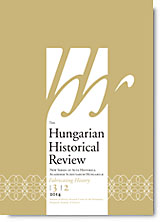
Over the course of the last decade, the disclosure in Poland of information regarding the secret collaboration of public figures with the Security Services (SB) has triggered emotional discussions on the reliability of the archival records stored in the Institute of National Remembrance (IPN). Analysis of these discussions enables one to draw a distinction between two opposing views. According to the first, documents stored in the archives of the IPN are incomplete and devoid of accurate information. According to the second, documents produced by the repressive apparatus of the communist state constitute a new type of historical source and contain reliable information. However, these discussions concerning the reliability of “files” lack methodological rigor and precision. I consider the reliability of the “files” in the light of Gerard Labuda and Jerzy Topolski’s concepts of historical sources. According to this analysis, the “files” do not constitute a new type of historical source requiring a radical rethinking of existing classifications and new interpretive methods. However, one precondition of an adequate interpretation is the acknowledgment of the purpose for which they were created and the functions they played in the communist state. The repressive apparatus collected, selected and stored information on society if they considered this information useful in the maintenance of political control over society. Ignorance of or failure to acknowledge this specific social praxis (and its different forms: manipulation, disintegration, misinformation, etc.) performed by the secret political police is one of the reasons for methodical and heuristic errors committed by historians: the uncritical application of the vision of social life and processes presented in these sources for the construction of the historical narrative.
More...
Historical photography has always played a crucial role in historiography, in the creation of collective memory, and in the perpetuation of historical traditions. Of all the photographic genres, portrait photography is the most prevalent genre and remains the “vera icon” of illustrated histories. The significance of portrait photography in historiography is amply illustrated by its use in the creation of so-called “Bulgarian national heroes,” historical figures that acquired an almost mythic significance largely through their depictions in photographic portraits. In this article I examine the specific use of this particular photographic genre in Bulgarian illustrated histories and provide analyses of the motifs and symbols of the portraits themselves, both as historical primary sources and as epistemological instruments that have had a decisive and continuous influence on the historical process of the creation of “true” national heroes. My aim is to outline the genesis of these photographic portraits in order to shed light on the process of their framing within the historical imagination as authentic representations.
More...
Laudatio in Honor of Professor Giovanna Motta on the Occasion of the Award of the Doctor Honoris Causa Title of “Petru Maior” University of Tîrgu Mureş
More...
Intelligence always was an important part of military conflicts. It was used, with more or less success by all important military leaders during ancient history but the peak was reached in the Roman army. For the first time special units were used for scouting, ambush techniques and for covert infiltration: procursatores, exploratores, speculatores. These units sometime decided the fate of the battle by their exact gathering of information. That is why leading military ideologist like Caesar, Onasander or Vegetius stressed out the importance of raising such units and the proper use of them.
More...